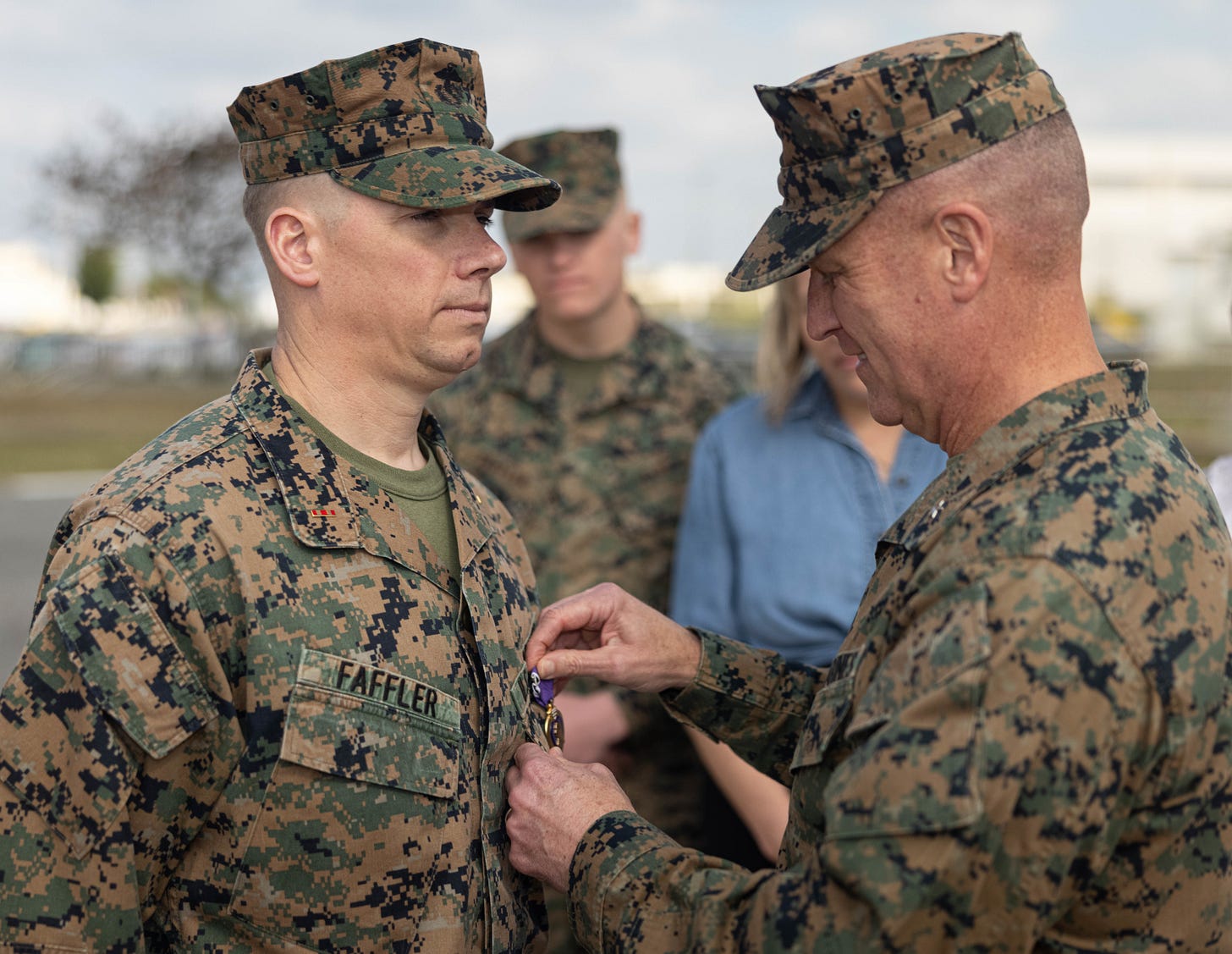Note: Much of what I’ve written thus far and shared with you here has focused on the intersection of social science, philosophy, and, to some extent, theology as they pertain to how we humans navigate the hardship and uncertainty of life. That will continue. Another important part of how we navigate a certain segment of life’s crucibles involves how we conceptualize, operate, and interact with the military. Why? Click here for an explanation. So, I’m exploring that once in a while via a ten-part series unpacking ideas from the book The Armed Forces Officer.
Below is part 5 of 10 (click here for all posts on this topic). As always, these are my views, and they do not necessarily represent the views of the U.S. Department of Defense or its components.
Leadership and the Military Officer
The idea of being a leader—being someone who initiates or shapes the social process of influence within a group toward a shared goal—is deeply woven into military culture. It’s one that’s especially part of the selection, training, norms, and expectations that go hand-in-hand with being a military officer.
We entrust military officers with authority quickly. For example, within my first two years as Navy officer, I was responsible for a division of technicians aboard my ship and while at sea, I took my turn filling a variety of roles and being accountable for a wide array of operational results. I stood watch leading the safe navigation of the ship, overseeing the engineering plant, and running small teams to conduct search and seizure operations on other vessels.
Since then, I’ve held many other formal positions of authority in the Navy. Holding a position or title isn’t the same as exercising leadership, however, because leadership is about the process of influence that occurs through interpersonal relationships. Leaders sometimes also hold formal titles or positions of authority; sometimes they don’t.
Regardless, engaging in this thing we call leadership is indeed an expectation for military officers. And as discussed by Richard Swain and Albert Pierce in the fifth chapter of The Armed Forces Officer, a fundamental mindset or approach that officers must have as they attempt to lead others is a call to service.
What Leadership is Not
In 2019, I led a Navy event with a unit I commanded at the time. We had a number of people from outside our unit joining us for the event, so we needed to talk about how we would all work together. We decided it would be helpful to draw our organizational chart on a whiteboard.
While having a side conversation with just a few of my fellow members of the senior leadership team, I jokingly suggested that we keep things really simple. Then I drew this on the whiteboard:
We all laughed. They knew me well enough to know that I was indeed joking. I erased it, and we then got down to the real business of organizing our efforts.
It made me smile then, and it makes me smile now. But what’s not funny is that in my various interactions with a wide range of types of people—military, civilian, entry level, mid-career, and executive—there seems to be a thought among too many of them that my intentionally silly organizational chart actually is how they should think about their work and relationships.
Regardless of the context, I’m with Swain and Pierce (among many other thinkers and writers) on this one: Leadership is and should be about a call to service.
What Service Means for Leaders: Implications
If leaders—here I’m thinking about military officers in particular but much of this likely applies broadly—are meant to serve, what might that look like?
Swain and Pierce begin their chapter on the topic with a quote from Fr. Edson Wood, an Augustinian priest who once served as the Cadet Catholic Chaplain at the U.S. Military Academy at West Point. As part of an invocation he delivered, Fr. Wood said, “… before it is an honor, leadership is trust; before it is a call to glory, leadership is a call to service; … before all else, forever and always, leadership is a willingness to serve.” (p. 57)

In terms of actual attributes, behaviors, or actions; Swain and Pierce suggest that leadership includes:
Accomplishing the mission and taking care of the people. Such a view aligns well with some of the classic views on leadership as involving task performance (getting things done) and what I sometimes think about as relationship health. Both are required for sustainable success. And thinking of oneself as curator of both—as someone who clarifies priorities, removes obstacles to success, and facilitates charting the path forward while valuing people’s individual contributions and caring for their personal well-being—goes a long way.
Human relationships. We’re much more likely to have an influence on other people if we have relationships with them characterized by mutual respect and a shared vision of what winning looks like both for the team and for the individuals within the team.
A mix of cultural norms and personal characteristics. Swain and Pierce highlight a handful of different ways in which the military branches conceptualize leadership, but I find what’s most useful is to focus upon what they have in common. Leaders, as they discuss, rely upon a continually built bond of trust with those around them, set and enforce standards, serve as role model of courage (both physical and moral), and build and sustain morale.
All of these elements, I argue, come together with much more ease and regularity when leaders have a selfless sense of duty regarding their positions of authority. They see their roles as ones in which they have the opportunity and responsibility to unleash the human potential all around them, to guide and direct people’s attention and efforts in a unified way, and to do so not for their own benefit but in the service of a greater good.
Summary
Being a demanding task master might work for a while to drive a team to achieve some goals. Yet over time, such an approach leads to resentment among followers, poor morale, and lower performance. Instead, the key to long-term commitment and motivation in leadership lies in the mindset of service, which requires leaders to maintain a sense of humility and a recognition of the greater good as they go about their business.
Regardless of whether one is trying to influence other people in a military or civilian context, there’s tremendous value in considering one’s role as one of service (1) to something bigger than themselves and (2) to the people involved in the effort. Considering leadership as a call to service, furthermore, keeps one’s focus off of oneself. It’s not about you.
It’s about them and what you’re trying to achieve—together.
Please note: The opinions and views expressed here belong solely to the author and do not necessarily reflect those of the Department of Defense (DoD) or its components. Any mention of commercial products or services does not imply DoD endorsement. Additionally, the presence of external hyperlinks does not signify DoD approval of the linked websites or their content, products, or services.
References and for further reading
All of my current posts about The Armed Forces Officer
The Armed Forces Officer by Richard M. Swain and Albert C. Pierce. Click here to download the book for free from National Defense University Press.
The Declaration of Independence
The Constitution of the United States
Code of Conduct for Members of the United States Armed Forces
Join the Navy! Click here for information





